The Whispering Knights was written almost forty years ago by Penelope Lively and my own copy of the book, which is so worn that the pages are falling out, is almost that old. This bears testament to how enthralling I’ve found the story, which I’ve read many times over the years since coming across it for the first time in a dusty old school library. Set in the Oxfordshire countryside, the story makes use of the many stone circles which are a feature of that part of England by referring to the Whispering Knights – according to legend knights frozen in stone many centuries ago by a magical spell that allows them to come to life again when the country’s need is greatest. Three children stumble across this legend and unwittingly awake an ancient evil that the Whispering Knights (who are so called because even as stones they are rumoured to mutter to each other constantly) were designed to combat – the wicked enchantress Morgan Le Fay. Full of magic, danger, ancient legends and mystical monuments, the ensuing story is easy to read, as befits what is essentially a children’s book, but as haunting and powerful as any adult fantasy novel. What makes The Whispering Knights even more fascinating in my opinion is the fact that it is rooted in real history as well as myth.
 Beyond Oxfordshire there are many parts of England in which stone monuments are located, perhaps most famously Stone Henge in Salisbury. Almost equally well known are the Rollright Stones, a complex of three Neolithic and Bronze Age megalithic monuments which, given their location near to the village of Long Compton on the borders of Oxfordshire, may well have inspired The Whispering Knights. Interestingly, the three Rollright monuments, which are known separately as The King’s Men, The King’s Stone and The Whispering Knights, were each built at different periods in history and for distinct purposes. By the time the various monuments were subjected to serious study, however, too much time had passed for their exact purposes to be determined and there was too little evidence to provide definitive answers. It has been variously speculated that they are sacrificial stones, primitive temples or even ancient time pieces. In the meantime, folklore grew up around the Rollright Stones, telling of how they had once been a king and his knights who had been turned to stone by a witch (perhaps a reference to King Arthur and Morgan Le Fay). In the modern age the monuments have become an important site for neopagans and others with an interest in the esoteric and the occult, who continue to hold quasi-religious ceremonies there, as perhaps happened when the stones were first erected aeons ago.
Beyond Oxfordshire there are many parts of England in which stone monuments are located, perhaps most famously Stone Henge in Salisbury. Almost equally well known are the Rollright Stones, a complex of three Neolithic and Bronze Age megalithic monuments which, given their location near to the village of Long Compton on the borders of Oxfordshire, may well have inspired The Whispering Knights. Interestingly, the three Rollright monuments, which are known separately as The King’s Men, The King’s Stone and The Whispering Knights, were each built at different periods in history and for distinct purposes. By the time the various monuments were subjected to serious study, however, too much time had passed for their exact purposes to be determined and there was too little evidence to provide definitive answers. It has been variously speculated that they are sacrificial stones, primitive temples or even ancient time pieces. In the meantime, folklore grew up around the Rollright Stones, telling of how they had once been a king and his knights who had been turned to stone by a witch (perhaps a reference to King Arthur and Morgan Le Fay). In the modern age the monuments have become an important site for neopagans and others with an interest in the esoteric and the occult, who continue to hold quasi-religious ceremonies there, as perhaps happened when the stones were first erected aeons ago.
The Rollright Stones have also found their way into popular culture. As well as Lively’s novel, they make an appearance in one of the strangest of all Doctor Who serials, The Stones of Blood (1978). Although the story is said to be set near the Nine Travellers, a fictional stone circle in Boscombe Moor, Cornwall, they are clearly based on the Rollright Stones and the various legends which surround them (the serial was in fact shot in this location rather than in Cornwall). In common with the legend of the Whispering Knights, the Nine Travellers are said to have once been alive, although they are anything but benign – they require the sacrifice of human life in order to awaken so that they can serve their dark goddess Cessair. The first couple of episodes are wonderfully Hammeresque, with lots of Druid rituals, scary witches (there is even a character called Vivien Fay, in homage to Morgan Le Fay) and some gorgeous location shots of the English countryside. It all turns a bit silly when, inevitably for Doctor Who, the aliens turn up but it is still hugely watchable for Tom Baker’s performance as the Doctor alone.
The Rollright Stones themselves are definitely worth a visit if you’re ever in Oxfordshire. Unlike Stone Henge, which has sadly become a bit of a tourist trap, these ancient monuments remain largely unspoilt. It is impossible not to be moved when you are standing in or near a circle of stones which has been around since the Bronze Age. If you stay still and listen very closely, you may even be able to hear those knights whispering…






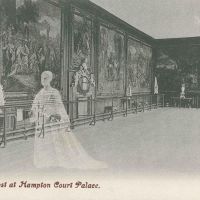
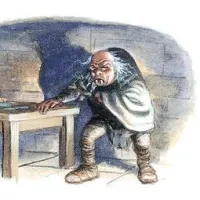

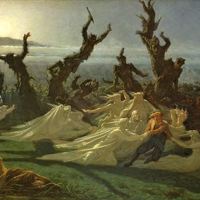
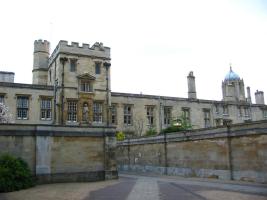


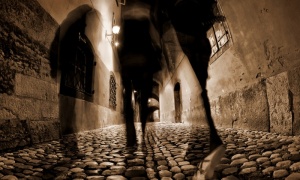


Very interesting article, and now I have to look up the book!!
Thanks, I’m sure you’ll like it!
I’ve started making a list of places, which you refer to in your posts, that we might try to see when we visit Europe. The Rollright Stones has been added 🙂
Thanks for another great post.
Enjoy – it’s a superbly atmospheric location!
Avebury is also a good visit, letting you really explore the stones.
Definitely agree 🙂